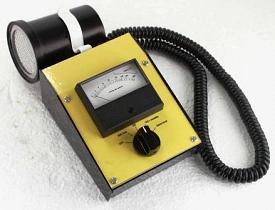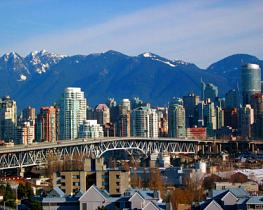Fukushima: Vancouver's radiation becoming deadly
Iodine-131 levels in British Columbia have been recorded as reaching at 3.6 millibecquerels per cubic metre on March 20. It continues to climb, as elites take only token action to stop Fukushima's growing nuclear catastrophe.
That’s more than 300 times higher than the background level, which is 0.01 or fewer millibecquerels per cubic metre.
“There have been massive radiation spikes in Canada because of Fukushima,” said Gordon Edwards, president of the Canadian Coalition for Nuclear Responsibility.
“The authorities don’t want people to have an understanding of this. The government of Canada tends to pooh-pooh the dangers of nuclear power because it is a promoter of nuclear energy and uranium sales.”
Edwards has advised the federal auditor-general’s office and the Ontario government on nuclear-power issues and is a math professor at Montreal’s Vanier College.
In a phone interview from his Montreal home, he said radiation from Fukushima will lead to higher rates of cancer and other diseases among Canadians. But don’t panic. Edwards cautioned that the risk is very small for any particular individual.
It’s not the risk to an individual that’s the problem but how much society is at risk.
When you are exposing millions of people to an insult, even if the average dose is quite small, we are going to see fatal health effects,” he said.
Some impacts may have already occurred in North America. Infant mortality in eight cities in the U.S. Northwest jumped 35 percent after Fukushima, according to an article by internist and toxicologist Janette Sherman and epidemiologist Joseph Mangano on the Counterpunch website in June.
The number of infant deaths rose from 9.25 per week in the four weeks prior to March 19 to 12.5 per week in the following 10 weeks, according to U.S. Centers for Disease Control data.
“There has been a dismissiveness about the long-term hazards of nuclear power,” said Dr. Curren Warf, adolescent-medicine division head at B.C. Children’s Hospital.
Warf was on the board of the Nobel Peace Prize–winning U.S. antinuclear group Physicians for Social Responsibility before he moved to B.C. in 2009.
“These were some of the most advanced nuclear power plants in the world. But a natural earthquake and tsunami rendered their safety measures completely meaningless,” he said in a phone interview while on vacation in Tofino on Vancouver Island.
It’s not clear what health impacts British Columbians will face from the fallout from Fukushima, Warf said. But he added, “It should be a warning to Canada, the U.S., and the rest of the world about the vulnerability of nuclear power plants to natural catastrophes. These things have typically been dismissed in much of the planning.”
Dr. Erica Frank agrees. “The main concern I’ve had is we are not paying attention to Fukushima as a warning sign. Given the catastrophic long-term issues and what to do about nuclear waste, I had hoped it would be more of a wake-up [call] than it was,” said Frank, a professor of population and public health in UBC’s faculty of medicine and a past president of Physicians for Social Responsibility.
She called on Canada to follow Germany’s lead, which, in response to Fukushima, decided in May to phase out all of its nuclear power plants by 2022. “If Germany can do it, we can too,” she said in a phone interview from her Vancouver home.
Read more?
Internet site reference: http://www.straight.com/article-415211/vancouver/fukushima-brings-big-radiation-spikes-bc
Comments
There are 0 comments on this post















